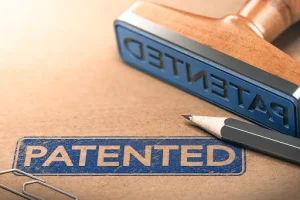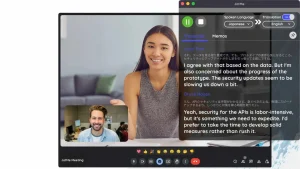If you plan to protect inventions across borders, Patent Translation Services will make or break your filing strategy. In the first mile of an international patent portfolio, Patent Translation Services determine what enters the record, what survives examination, and what stands up in court. In daily operations, Patent Translation Services ensure your claims align with the original intent, that deadlines are met in every jurisdiction, and that local counsel can act without guesswork. This guide distills five field-tested strategies to help you invest wisely, buy once, and defend your intellectual property rights with confidence.
Start with the filing map, not the dictionary
Before you discuss glossaries or pricing, lock your route through the system. Are you filing via the PCT and entering national or regional phases at around 30 months, or are you filing directly country by country? Your map drives which languages, who must translate what, and when. Under the PCT, applicants typically move from the international phase into national phases at about 30 months from priority, which is when most translation obligations crystallize.
For Europe, remember that the EPO works in three official languages: English, French, and German. If you file in another language, you must provide a translation into one of these within the EPO’s time limits. With the new Unitary Patent, a single full translation is required only during a transitional period; after that, no translation is needed to obtain unitary effect. National validations in many EPC states are also lighter under the London Agreement, though you still file claim translations in FR and DE when English is the language of proceedings.
China and Japan remain translation-heavy: CNIPA requires a Chinese translation at or before national-phase entry; JPO requires Japanese translations of the description, claims, drawings, text, and abstract by the national-phase deadline. Missing or weak translations can derail prosecution timelines.
Must-know: sequence listings filed on or after July 1, 2022, must use WIPO ST.26 XML worldwide, including at the USPTO. Your translation plan must not “translate” sequences; it must preserve compliant data structures.
Engineer terminology so claims cannot be “lost in translation”
Patent translation is legal drafting in another language, not transcription. Two risks dominate everywhere: added matter and scope drift. Under EPC Article 123(2), anything that reads beyond the content as filed is fatal; translation choices that broaden or narrow beyond the original disclosure can trigger objections or even revocation. US practice is not gentler: case law shows that inaccurate translations of priority filings can sink a US patent in litigation.
Practical safeguards:
- Maintain a living bilingual glossary for terms of art, units, and claim verbs; forbid casual synonyms once terms are fixed.
- Require translators to flag doubtful passages and potential source-text errors for attorney review rather than “fixing” them silently.
- Keeping punctuation conservative, one comma can change claim scope, as EPO decisions continue to remind practitioners.
Corrections may be possible pre-grant at the EPO, and “obvious mistakes” may be rectified under PCT Rule 91 or by USPTO certificates of correction, but do not rely on post-hoc cures for scope-changing errors. Prevention is cheaper than rescue.
Build a deadline-first workflow for every jurisdiction
Patent translations are governed by hard clocks, and they differ by office. Examples:
- PCT national phase: usually 30 months from priority; some offices allow 31 or more months or reinstatement within defined windows.
- CN: translation into Chinese by national-phase entry.
- JP: Japanese translations due by national-phase entry or shortly after, depending on route.
- BR and AR: local rules may require Portuguese or Spanish materials at filing, and in Argentina, certain proceedings require sworn translators. Know these exceptions early.
Your vendor should show a jurisdiction matrix that lists what must be translated (claims only, full spec, abstracts, drawings, text), by when, and with which formalities. Treat that matrix as the schedule for your Translation Services purchase orders, not as an afterthought.
Treat quality assurance like forensics, not proofreading
Top-tier patent work uses layered review with clear ownership:
- Technical vetting by a subject-matter linguist who understands the art unit and standard phrasing.
- Legal vetting against claim support to avoid 123(2) EPC or new-matter pitfalls and preserve US enablement standards.
- Format vetting for claim numbering, reference numerals, and any text in figures that carries meaning.
Document every decision. Many offices will let you correct obvious errors before a grant, but once a patent issues, translation errors are hard or impossible to cure without risking scope or validity.
Benchmark context: even as global filings fluctuate, a 1.8% PCT filing decline in 2023, the bar on translation accuracy stays high because more filings now sit in translation-sensitive markets and systems.
Why TransLinguist is the right partner for evidence-grade patent Translation Services
TransLinguist treats every patent as a legal instrument, not marketing prose. Our legal language teams, technical linguists, and editor-led reviewers align translations with the original disclosure so that claim scope and enablement survive examination and litigation. We plan around your filing map, deliver on hard national phase clocks, and keep a single terminology spine across offices so counsel is never guessing.
What you can expect from TransLinguist for patents
- Specialized legal and technical linguists with editor oversight.
- Certified legal translations for courts and official use.
- Terminology and glossary management for consistent phrasing.
- Court and legal interpreting, plus multilingual eDiscovery support.
- Security by design, including encrypted transport and storage, GDPR-aligned practices, and authenticated access.

A quick selector for common scenarios
- Entering EP with a PCT in English: confirm claim translations, decide on unitary effect, and plan any national validations that still require limited translations.
- Pivoting into CN or JP: prioritize early technical alignment so the Chinese or Japanese terminology reads as native to examiners in that art.
- Bio filings with sequences post-2022: keep ST.26 XML-compliant listings separate from narrative translation; never translate” sequence data.
- Sworn translation jurisdictions: confirm if local rules require sworn or certified translators for court submissions or certain filings.
What this means for your RFP
Ask would-be providers to deliver a jurisdiction calendar, a sample bilingual glossary, and a red-line QA pack on your own text. Require named reviewers, security controls, and a plan to keep claims and descriptions aligned from draft to grant. Then measure outcomes: national-phase timeliness, office-action cycles, and downstream litigation readiness.
Ready to reduce risk and gain speed. TransLinguist can implement this system end-to-end so your Translation Services support filings, office actions, and enforcement with the same terminology, the same editors, and the same secure workflow.
Conclusion
Patents are brittle documents. One mistranslated verb can shrink a monopoly; one missed deadline can erase it. Buy Translation Services like you buy insurance for mission-critical assets—by the process, by the people, and by the proof. If you want a partner that treats every word like evidence and every date like a deadline, TransLinguist is ready to help. Start Your Translation Project Today and secure a patent translation program built for filing, examination, and enforcement.
FAQs
Do translation errors really affect claim scope?
Yes. Under EPC Article 123(2), added matter is fatal, and US cases show priority translations can undermine patents. Good QA prevents changes that broaden or narrow beyond the original disclosure.
When are translations due in the PCT route?
Most translation duties land at the national or regional phase entry around 30 months from priority, with office-specific nuances and limited reinstatement options in some jurisdictions.
Which offices are the most translation-sensitive?
Europe, China, and Japan each have strict language rules. EPO accepts English, French, or German with specific translation and validation steps; CN and JP require full Chinese or Japanese texts on entry.
Do any countries require sworn or certified translations?
Some jurisdictions and court contexts do. For example, Argentina uses sworn translators for certain legal submissions; Brazil imposes specific Portuguese translation requirements at filing. Check local counsel early.



